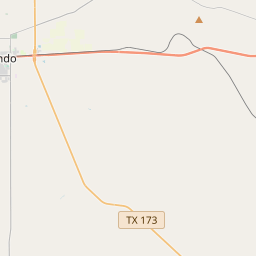Renken Cemetery
Historical marker location:





German native Henry Renken created this cemetery in 1876 upon the death of his wife, Lissette (Kueck) Renken. She was buried on property owned by Gerhard Ihnken that Renken had sold to him in 1874. Renken was an active contributor to the Castroville Community, where he was a member of the Masonic Lodge and served as a city alderman and as mayor. Although he later married Helene Thieu Borchers, he was buried here, next to his first wife, when he died in 1885. Records show that the Renkens’ daughter, Louisa Renken Tschirhart, was also buried at the site, although no grave marker remains. The property was sold to the city of Castroville by a later owner in 1968, and Castroville Regional Park now surrounds the diminutive burial ground
As one of the most visible programs of the Texas Historical Commission (THC), historical markers commemorate diverse topics in Texas history, including: the history and architecture of houses, commercial and public buildings, religious congregations, and military sites; events that changed the course of local and state history; and individuals who have made lasting contributions to the state, community organizations, and businesses.
The Texas Rangers, a famous law enforcement agency, were first organized in 1835 to protect settlers from Native American attacks.
In the 17th century, Spanish explorers arrived in the region, claiming the land for Spain. The Spanish established missions in the area to convert the Native Americans to Christianity and to further their control over the territory. One of the most notable missions was Mission San Francisco de la Espada, which still stands today and is a popular tourist attraction.
During the 19th century, the area that is now Medina County became a part of the Republic of Texas after it gained independence from Mexico. As more settlers moved into the area, the town of Castroville was founded in 1844 by colonists led by Henri Castro. The town became a major hub for German immigrants, and their influence can still be seen today in the town's architecture and cultural heritage.
Over the years, Medina County has experienced significant economic growth and development. The discovery of oil in the early 20th century led to an oil boom in the area, and agriculture has also played a significant role in the county's economy, with cattle ranching and crop farming being major industries.
Today, Medina County is a thriving community that celebrates its rich history and diverse cultural heritage. Visitors can explore the area's historical sites, such as the missions and historic downtown areas, while also enjoying the natural beauty of the surrounding countryside.
Medina County Timeline
This timeline provides a condensed summary of the historical journey of Medina County, Texas.
- 1841 - Medina County is established as a county in the Republic of Texas.
- 1842 - Castroville, the county seat, is founded by Henri Castro.
- 1846 - Medina County becomes part of the United States after the annexation of Texas.
- 1850 - D'Hanis, another town within Medina County, is settled.
- 1856 - Hondo is founded and becomes the new county seat.
- 1861-1865 - During the Civil War, Medina County supports the Confederacy.
- 1881 - The International-Great Northern Railroad is completed, boosting economic development.
- 1917-1918 - Many Medina County residents serve in World War I.
- 1920s-1930s - The Great Depression causes economic hardship in the county.
- 1942-1945 - World War II leads to changes in the local economy and military service.
- 1953 - Medina Lake is created with the construction of Medina Dam.
- 1998 - The historic Medina County Courthouse is restored after a fire severely damages it.